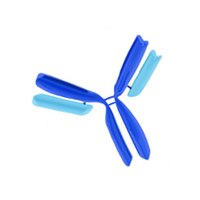OP62 Sigma-AldrichAnti-APC (Ab-5) Mouse mAb (CF11)
Recommended Products
Overview
| Replacement Information |
|---|
Key Spec Table
| Species Reactivity | Host | Antibody Type |
|---|---|---|
| H, M | M | Monoclonal Antibody |
| Description | |
|---|---|
| Overview | This product has been discontinued. Recognizes all full-length (p300) and truncated (p147) forms of APC. |
| Catalogue Number | OP62 |
| Brand Family | Calbiochem® |
| Synonyms | Anti-Adenomatous Polyposis Coli |
| Physicochemical Information |
|---|
| Dimensions |
|---|
| Materials Information |
|---|
| Toxicological Information |
|---|
| Safety Information according to GHS |
|---|
| Safety Information |
|---|
| Product Usage Statements |
|---|
| Storage and Shipping Information | |
|---|---|
| Ship Code | Blue Ice Only |
| Toxicity | Standard Handling |
| Storage | +2°C to +8°C |
| Do not freeze | Yes |
| Packaging Information |
|---|
| Transport Information |
|---|
| Supplemental Information |
|---|
| Specifications |
|---|
| Global Trade Item Number | |
|---|---|
| Catalogue Number | GTIN |
| OP62 | 0 |
Documentation
Anti-APC (Ab-5) Mouse mAb (CF11) SDS
| Title |
|---|
Anti-APC (Ab-5) Mouse mAb (CF11) Certificates of Analysis
| Title | Lot Number |
|---|---|
| OP62 |
References
| Reference overview |
|---|
| Smith, K.J., et al. 1993. Proc. Natl. Acad. Sci. USA 90, 2846. Su, L.-K., et al. 1993. Can. Res. 53, 2728. Boynton, R.F., et al. 1992. Proc. Natl. Acad. Sci. USA 89, 3385. D'Amico, D., et al. 1992. Cancer Res. 52, 1996. Fearon, E.R., and Jones, P.A. 1992. FASEB J. 6, 2783. Miyoshi, Y., et al. 1992. Proc. Natl. Acad. Sci. USA 89, 4452. Powell, S.M., et al. 1992. Nature 359, 235. Groden, J., et al. 1991. Cell 66, 589. Kinzler, K.W., et al. 1991. Science 253, 661. Nishisho, I., et al. 1991. Science 253, 665. |







